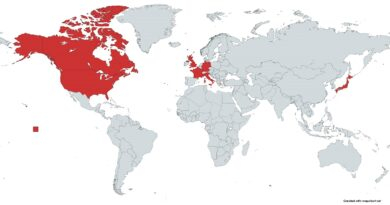NMMSS- National Means-cum-Merit Scholarship Scheme
Context:
Recently, the Union government has approved the continuation of the Central Sector National Means-cum-Merit Scholarship (NMMSS) over the 15th Finance Commission cycle for a period of five years i.e. from 2021-22 to 2025-26.
Contents
About NMMSS:
- The ‘National Means-cum-Merit Scholarship Scheme’ (NMMSS) is a Central Sector Scheme
- Scheme launched in May, 2008
- It provides scholarships for meritorious students of classes IX to XII.
- The scheme is on-boarded on the National Scholarship Portal (NSP).
- To award scholarships to meritorious students of economically weaker sections to arrest their drop out at class VIII and encourage them to continue their study and complete secondary stage.
- The scheme envisages award of one lakh fresh scholarships every year to selected students of class IX and their continuation/renewal in classes X to XII for study in a State Government, Government-aided and Local body schools under the scheme.
- An amount of Rs. 12000/- per student per annum. The rate of scholarship has been enhanced from Rs. 6000/- to Rs. 12000/- per year with effect from 1st April, 2017.
Eligibility criteria to appear in NMMSS selection test:
- Students whose parental income from all sources is not more than Rs. 1,50,000/- per annum are eligible to avail the scholarships.
- The student must have minimum of 55 % marks or equivalent grade in Class VII examination for appearing in selection test for award of scholarship (relaxable by 5% for SC and ST students).
- The student should be studying as regular student in a Government, Government-aided and local body schools. Students of NVS, KVS and residential schools are not entitled for the scholarships.
- There is reservation as per State Government norms.
Modern Education in India: The Evolution of the System through various policies
The British government had introduced modern education in India. From Macaulay minute to Wood’s dispatch to several commissions like Sadler commission, 1904 Indian education policy etc. build the foundation of the Indian education system during the colonial period.
Radhakrishnan committee
In 1948-49, the University Education Commission was constituted under Radhakrishnan. It moulded the education system based on the needs of an independent India. The pre-Independent Indian education value system was catering to colonial masters. There was a need to replace Macaulayism with the Indian value system. (Macaulayism is the policy of eliminating indigenous culture through the planned substitution of the alien culture of a colonizing power via the education system). Some of the values mentioned in the commission were:
- Wisdom and Knowledge
- Aims of the Social Order: the desired social order for which youths are being educated.
- Love for higher values of life
- Training for Leadership
The Independent Indian education system developed along the lines of this value framework. In the present times, where there are imminent threats of political ideologies hijacking the pedagogy of education and commercialization of education eroding value systems, it is appreciable to dust off the values promulgated by the commission. Recent controversial circular by the Central University of Kerala (CUK), directing that research topic for PhD students must be in accordance to ‘national priorities’, and research in ‘irrelevant topics’ and ‘privilege areas’ must be discouraged, is a case in point.
Kothari commission
If the Radhakrishnan committee charted out the value system of the Indian education system, it was the Kothari commission who provided the basic framework of the same. The commission provided for:
- Standardization of educational system on 10+2+3 pattern.
- Emphasized the need to make work experience and social/national service an integral part of education.
- Linking of colleges to several schools in the neighbourhood.
- Equalization of opportunities to all and to achieve social and national integration.
- Neighbourhood school system without social or religious segregation and a school complex system integrating primary and secondary levels of education.
- Establishment of Indian Education Service.
- On the job training of the teaching staff and for efforts to raise the status of the teachers to attract talents into the profession.
- To raise expenditure on education from 2.9% of the GDP to 6% by 1985.
This committee report paved the way for the National Educational Policy 1968 which provided the base and roadmap for further development of the education system in India.
National Educational Policy 1968
- The policy provided for “radical restructuring” and equalization of educational opportunities to achieve national integration and greater cultural and economic development.
- Increase public expenditure of education to 6% of GDP.
- Provide for better training and qualification of teachers.
- Three-language formula: state governments should implement the study of a modern Indian language, preferably one of the southern languages, apart from Hindi and English in the Hindi-speaking states, and of Hindi along with the regional language and English in the non-Hindi speaking states. Hindi was encouraged uniformly to promote a common language for all Indians.
National Educational Policy 1985
- The policy aimed at the removal of disparities and to equalize educational opportunities, especially for women, SC and ST.
- Launching of “Operation Blackboard” to improve primary schools nationwide.
- IGNOU, the Open University, was formed.
- Adoption of the “rural university” model, based on the philosophy of Mahatma Gandhi, to promote economic and social development at the grassroots level in rural India.
T.S.R.Subramanium committee report
- Early Childhood Care and Education (ECCE) – children from four to five years of age – to be declared as a fundamental right.
- ECCE is inconsistent across states. So all government schools should have facilities for pre-primary education, which would facilitate pre-school education by the government instead of the private sector.
- Exam reform:
- The policy of no detention should be upheld only till class five and not till class eight.
- Teacher Management:
- There is a steep rise in a teacher shortage, absenteeism and grievances.
- Need to constitute an Autonomous Teacher Recruitment Board.
- Four years integrated B.Ed. the course should be introduced.
- ICT in Education:
- There is an inadequate integration of information technology (IT) and the education sector.
- Vocational education and training:
- National Skills Qualification Framework should be scaled up.
- The choice of vocational courses should in line with local opportunities and resources.
- Bringing formal certification for vocational education at par with conventional education certificates.
- All India Education Service.
- National Higher Education Promotion and Management Act (NHEPMA):
- Existing separate laws governing individual regulators in higher education should be replaced by the said act.
- The role of existing regulatory bodies like UGC and AICTE should be revised.
- National Accreditation Board (NAB) subsuming the existing accreditation bodies.
Kasturirangan Report On School Education (Draft National Education Policy)
For restructuring the education system in India, the government is preparing to roll out a New Education Policy which will cater to Indian needs in the 4th Industrial Revolution by making use of its demographic dividend. Committee for Draft National Education Policy (chaired Dr. K. Kasturirangan) submitted its report on May 31, 2019.
You can read about the National Education Policy 2020 in detail here.
National Institute of Educational Planning and Administration
- The National Institute of Educational Planning and Administration (NIEPA) was established by the Ministry of Human Resource Development, Government of India.
- The National Institute has its origin dating back to 1962 when the UNESCO established the Asian Regional Centre for Educational Planners and Administrators which later became the Asian Institute of Educational Planning and Administration in 1965.
- After 4 years of its existence, it was taken over by the Government of India.
- Subsequently, with the increased roles and functions it was renamed as the National Institute of Educational Planning and Administration (NIEPA) in 1979.
- The Government of India has empowered it to award its own degrees by way of conferring it the status of Deemed to be University in August, 2006.
Education In India
- Constitutional Provisions:
- Part IV of Indian Constitution, Article 45 and Article 39 (f) of Directive Principles of State Policy (DPSP), has a provision for state-funded as well as equitable and accessible education.
- The 42nd Amendment to the Constitution in 1976 moved education from the State to the Concurrent List.
- The education policies by the Central government provides a broad direction and state governments are expected to follow it. But it is not mandatory, for instance Tamil Nadu does not follow the three-language formula prescribed by the first education policy in 1968.
- The 86th Amendment in 2002 made education an enforceable right under Article 21-A.
- Related Laws:
- Right To Education (RTE) Act, 2009 aims to provide primary education to all children aged 6 to 14 years and enforces education as a Fundamental Right.
- It also mandates 25% reservation for disadvantaged sections of the society where disadvantaged groups
- Right To Education (RTE) Act, 2009 aims to provide primary education to all children aged 6 to 14 years and enforces education as a Fundamental Right.
- Government Initiatives:
- Sarva Shiksha Abhiyan, Mid Day Meal Scheme, Navodaya Vidyalayas (NVS schools), Kendriya Vidyalayas (KV schools) and use of IT in education are a result of the NEP of 1986.
Source: Indian Express
You can find many articles on EDUCATION (part of GS II) in our website. Go through these articles share with your friends and post your views in comment section.
Discover more from Simplified UPSC
Subscribe to get the latest posts sent to your email.



